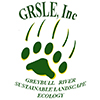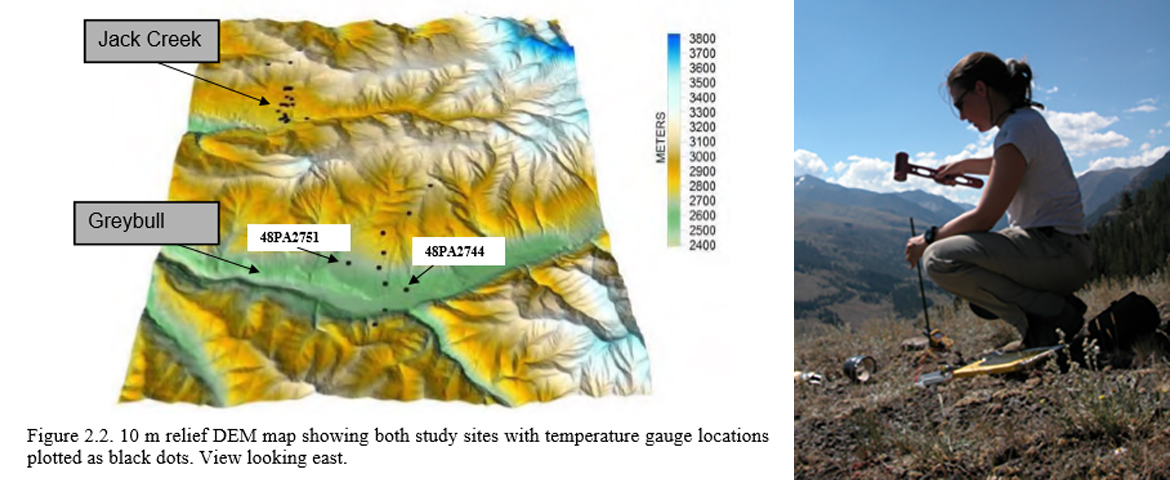THERMAL LANDSCAPES: TEMPERATURE AND SITE PLACEMENT IN NORTHWEST WYOMING
Click Thesis title to open fulltext pdf version of complete thesis
ABSTRACT OF THESIS
Biotic communities are shaped primarily by interactions between temperature, effective moisture, topography, soil, disturbance regime and time. In a montane ecosystem, temperature and effective moisture vary with topography across short distances. These topographically driven changes cause concordant variation in habitat structure. Prehistoric hunter-gatherers in a montane ecosystem may have incorporated topography, temperature, and habitat structure into site placement strategies. This study seeks to understand the correlation between topographically mediated temperature gradients (the thermal landscape) and montane prehistoric activity areas.
Over 50 newly recorded prehistoric sites have been identified in the Central Absaroka Range in Northwest Wyoming. In order to test the hypothesis of temperature effecting site choice, thermal landscapes were constructed by placing data collectors across the two watersheds, Greybull and Jack Creek, within the study area. The gauges were placed at elevation gradients to capture topographic change. Gauges were also placed on prehistoric sites ranging from 7500 Before Present (BP) to 100 BP in age. Temperature gradients were compared to the surficial archaeological record to test a temperature-driven prehistoric site placement hypothesis. It was determined, contrary to the main hypothesis that the sites would be placed in warmer locations, that the archaeological sites actually recorded the coolest nighttime temperatures regardless of elevation. There are some demonstrated correlations between nighttime temperatures and site placement in the montane watersheds. Daytime temperature, which varies independently of nighttime temperature, may play more of a role in site placement than previously thought. These data indicate that contemporary notions of elevation and temperature with regards to prehistoric site placement in montane watersheds should be re-evaluated.
Kelly Marie Derr. Anthropology Department, Colorado State University, Fort Collins, CO 80523. Spring 2006

